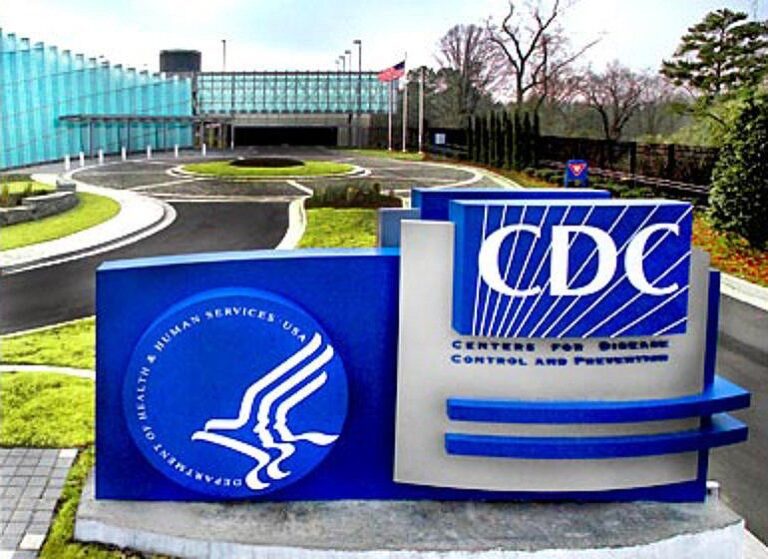Written by Pat Anson
If you think the U.S. Centers for Disease Control and Prevention has mishandled the coronavirus response and misled the public about the risks of opioid painkillers, you probably won't support new recommendations from a federal advisory panel.
The National Academies of Sciences, Engineering, and Medicine (NASEM) wants the CDC to play a larger role in determining federal policy on cannabis, including expanding oversight of cannabis use and establishing “best practices” for states to follow in regulating cannabis. I hope to fulfill this goal. .
In other words, the CDC's cannabis guidelines, as well as the agency's opioid prescribing guidelines, will be used as a model for state laws and regulations. Only this guideline goes further.
“Best practices include marketing restrictions, age restrictions, brick-and-mortar and retail business restrictions, taxation, price restrictions, product design, and measures to limit youth access,” NASEM said in a 312-page report released this week. It should be done.” “Once the Centers for Disease Control and Prevention best practices are developed, they should be incorporated into the model law.”
Currently, cannabis is illegal under federal law, but 38 states and the District of Columbia allow its use for medical and/or recreational purposes. At the request of the Biden administration, the DEA is considering a proposal to reclassify cannabis as a Schedule III controlled substance, which would allow some medical uses of cannabis under federal law. A final decision is likely to be made next year.
But with major changes in federal policy on the horizon and a hodgepodge of state regulations already in place, NASEM believes federal agencies and Congress should be more involved in shaping legalized cannabis policy. I hope.
“A collaborative public health approach to U.S. cannabis policy is urgently needed,” said Steven Teutsch, a senior research fellow at the University of Southern California and chair of the committee that produced the NASEM report. ” he said. “Our report finds that cannabis policy often focuses first on regulating sales and profits and then on protecting public health. It’s time for the federal government to take charge of public health. It's time to create guidance for states that have legalized marijuana to protect them.”
The first recommendation from NASEM is for Congress to overhaul the regulation of hemp, which was legalized under the 2018 Farm Bill. This opens the door for cannabis companies to adjust the chemical composition of hemp-derived delta-8 THC to make it more potent. Intoxicating edibles containing delta-8 THC are now widely sold as candies, cookies, gummies, and beverages, even in states where medical and recreational marijuana is illegal.
NASEM is asking Congress to close that loophole by changing the definition of hemp so that delta-8 THC is regulated like other cannabis products.
public health campaign
The report also calls on the CDC to develop a “targeted public health campaign” to warn about the risks of marijuana use by children, pregnant women, and the elderly.
A recent study found that 12% of Americans over 50 have consumed a THC-containing product in the past year, meaning the latter is the fastest growing segment of the cannabis-using population. There is one. Ironically, many of them are using cannabis to manage chronic pain because they no longer have access to opioids after widespread misuse of CDC opioid guidelines.
The NASEM report also examines the influence of cannabis industry lobbying that is contributing to the weakening of cannabis regulations in Colorado and Washington, as well as the conflicts of interest and financial entanglements that some state regulators have with the cannabis industry. It also warns about.
Given the amount of bias and conflict that the CDC had when it secretly developed its opioid guidelines, and given that CDC insiders hijacked public hearings to silence anyone who might object to the guidelines. , this is quite a rich story.
Conservatives who criticize the CDC are unlikely to support efforts to involve the CDC in cannabis regulation. The Heritage Foundation's Project 2025 calls for cutting the CDC's budget and severely limiting its ability to develop sound policy.
“COVID-19 has exposed the Centers for Disease Control and Prevention as perhaps the most incompetent and arrogant agency in the federal government,” wrote Roger Severino, former director of the Office of Civil Rights at the Department of Health and Human Services during the Trump administration. Ta. .
“Public health officials should never be allowed to withhold information, ignore information, or mislead the public regarding the effectiveness or risks associated with recommended health interventions.”
A CDC spokesperson told The Associated Press that the agency will study NASEM's recommendations and will need more funding to implement them.

